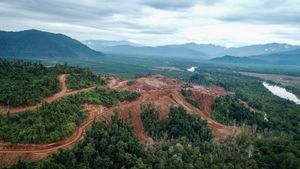The Chandrayaan-3 mission, which marked its first anniversary recently, made headlines not just for being India’s historic lunar expedition but also for unearthing fascinating insights about the Moon's primordial state. Scientists believe the Moon may have once been covered by a vast ocean of magma, offering clues about its formation and early history.
Launched by the Indian Space Research Organisation (ISRO), Chandrayaan-3 successfully landed on the Moon's south pole on August 23, 2023. This landing was particularly significant, as it made India the first country to explore this previously uncharted territory.
Chandrayaan-3 consisted of two main components, the Vikram lander and the Pragyan rover. While the Pragyan rover operated for one lunar day, collecting and analyzing soil data, the Vikram lander remains operational, continuously sending valuable information back to Earth.
The mission involved rigorous analysis of lunar regolith, particularly focusing on its elemental abundance. Using instruments like the alpha particle X-ray spectrometer (APXS), Pragyan made 23 measurements of chemical elements within the lunar soil, leading to groundbreaking findings.
One of the key discoveries from the mission was the prevalence of ferroan anorthosite, a light mineral believed to have floated to the surface during the Moon's cooling period after the magma ocean. Research from past lunar missions indicated this mineral composition is consistent across various lunar regions, reinforcing longstanding theories about the Moon's hot and molten beginnings.
According to studies, the majority of the Moon’s crust may have formed once the early magma ocean began to cool down. The lighter minerals, such as ferroan anorthosite, eventually floated to the surface, creating the Moon's outer layer. This aligns with the lunar magma ocean theory, which suggests the Moon originated from debris resulting from the colossal impact of Theia, a Mars-sized body, colliding with Earth around 4.5 billion years ago.
NASA's Apollo missions had previously collected lunar samples, supporting theories about the Moon's fiery past. The Apollo 16 mission, conducted back in 1972, found similar compositions within equatorial regions, reinforcing the notion of widespread magma activity during the Moon's formation.
"The 23 measurements at the Chandrayaan-3 landing site indicate the local lunar terrain is uniform and mainly composed of ferroan anorthosite, reinforcing the lunar magma ocean model," the study authors shared. This research not only adds weight to existing theories but also fuels future lunar exploration endeavors.
The presence of magnesium-rich rocks detected by Pragyan has intrigued researchers as well. These rocks, originating deep within the lunar crust, might have surfaced due to significant meteorite impacts, providing insights on how cosmic events shaped the Moon’s surface.
India's mission stands out not just for its scientific discoveries but also as part of the larger narrative of lunar exploration. The south pole region is of special interest to scientists because it is believed to house large amounts of ice, which could be pivotal for future missions aiming for human habitation and resource utilization.
Overall, the data from the Chandrayaan-3 mission is transforming our comprehension of the Moon’s geological evolution. The findings promise to illuminate not only our celestial neighbor’s history but also the broader dynamics of the solar system.
With the successful execution of Chandrayaan-3, India's aspirations for future lunar missions are taking shape, as they prepare for even more ambitious exploratory targets. The process of collecting more lunar samples could be pivotal, especially when considering how these findings could impact our cosmic story.
Future missions may focus on ice availability and the potential for sustained human presence on the Moon. There's growing interest among other nations and private enterprises, indicating collaborations may bring new avenues for the exploration of our celestial neighbor.
Each new discovery prompts excitement, not just for what we learn about the Moon itself, but for the possibilities of life beyond our planet. Chandrayaan-3 sets the stage for questions yet to be explored, paving the way for humanity’s next steps on the Moon and beyond—Mars, perhaps?



